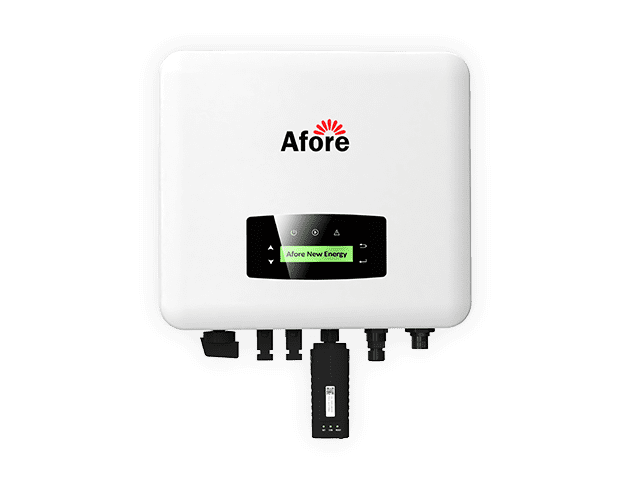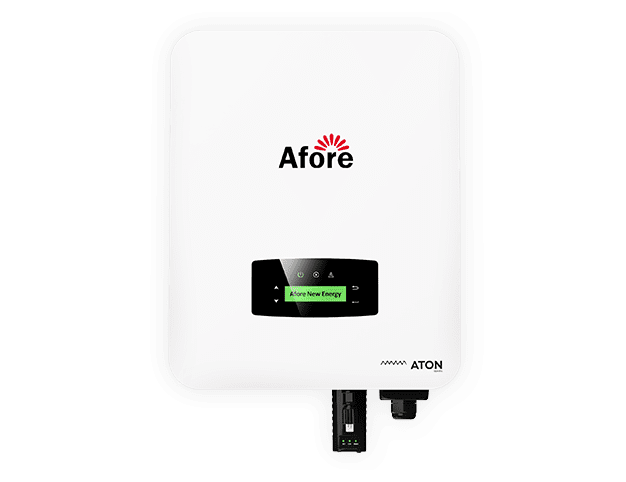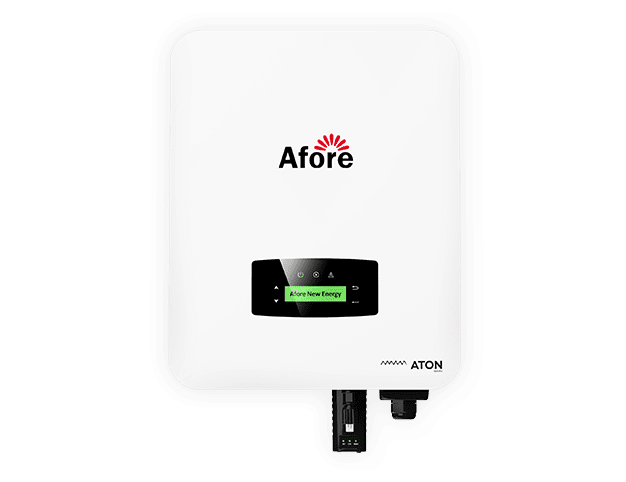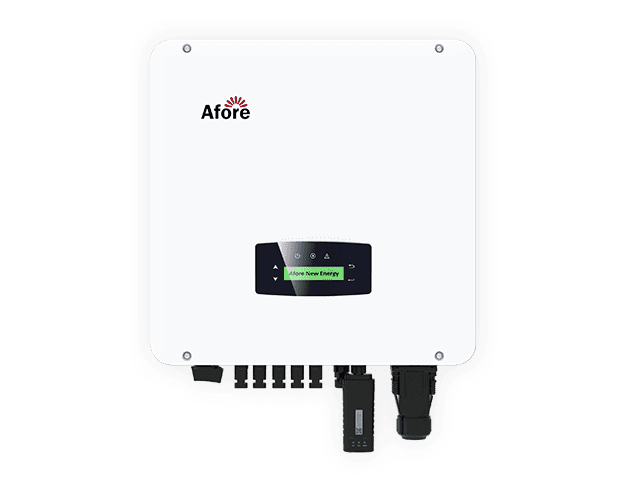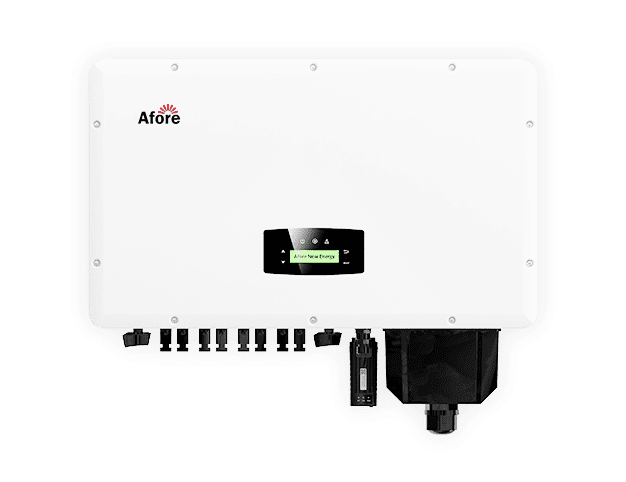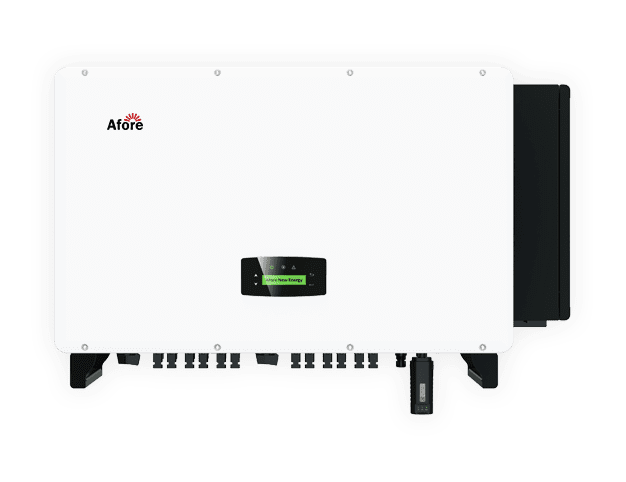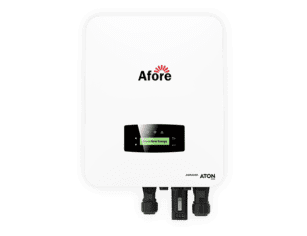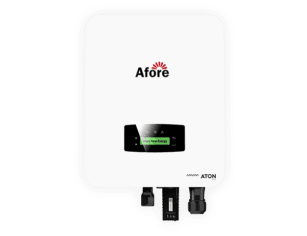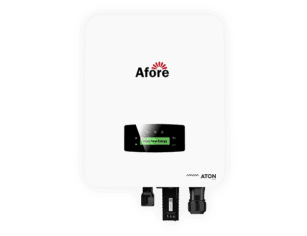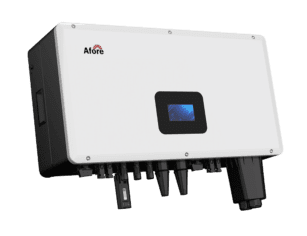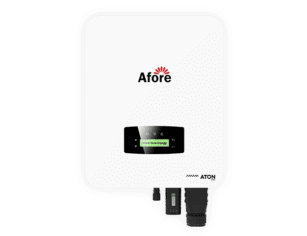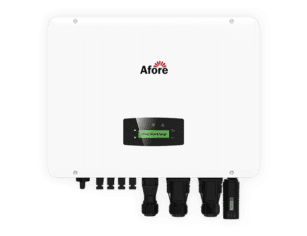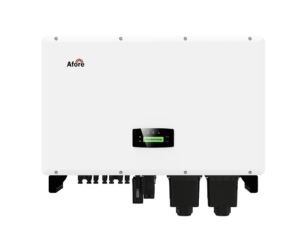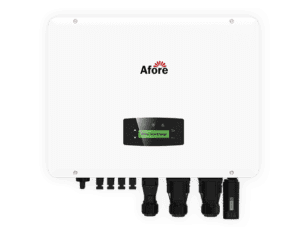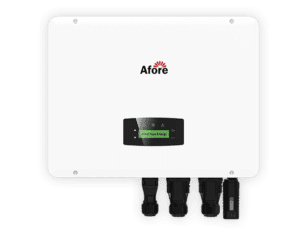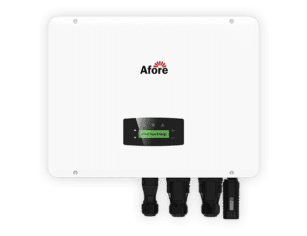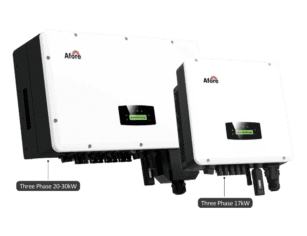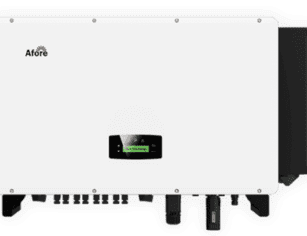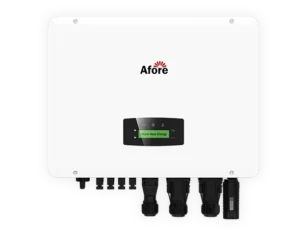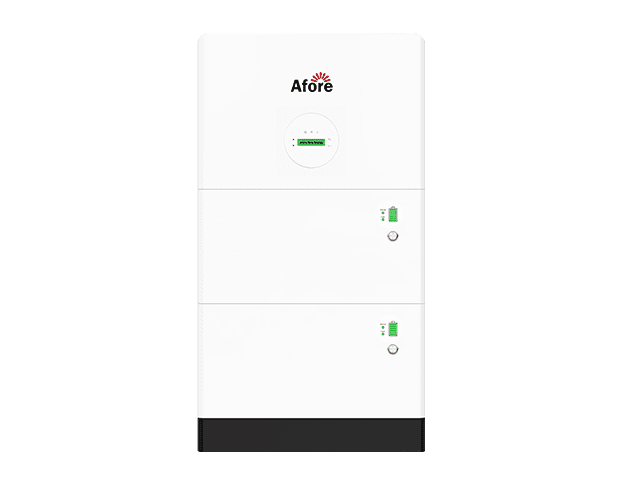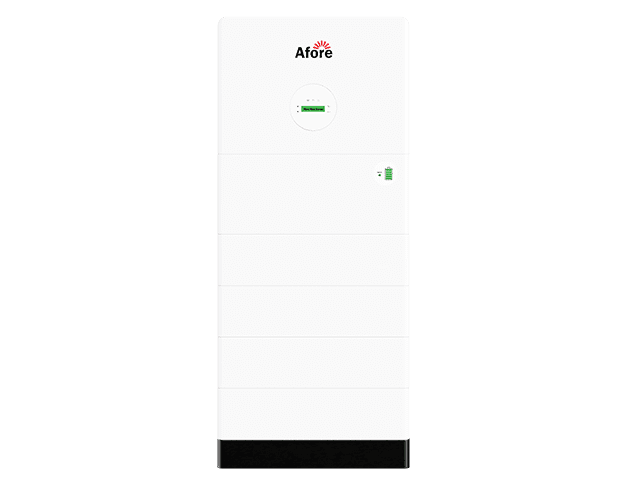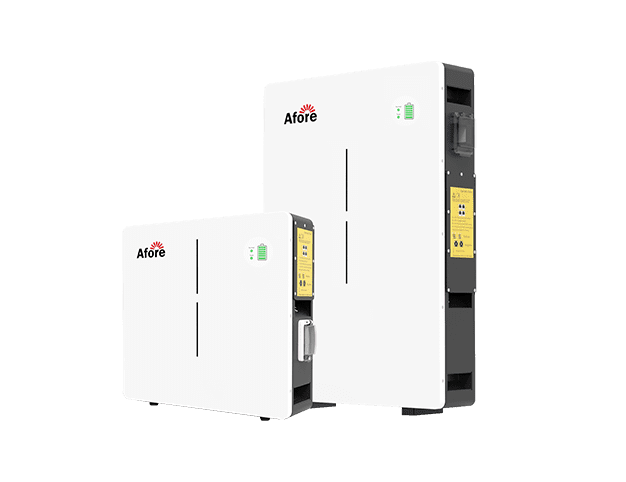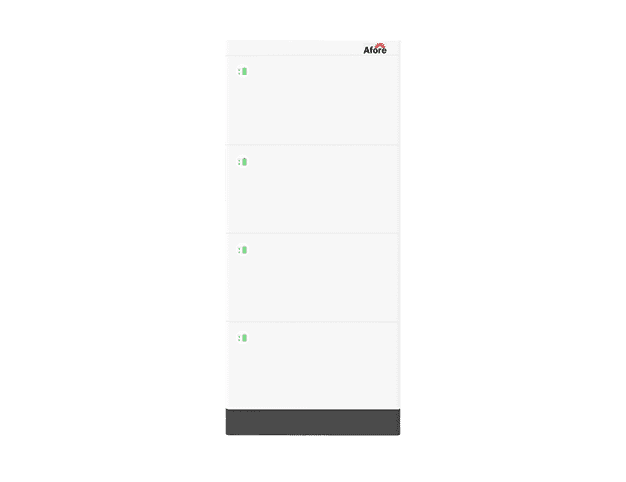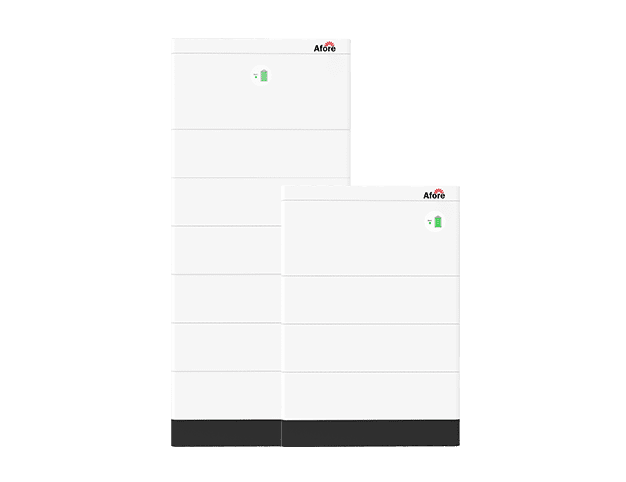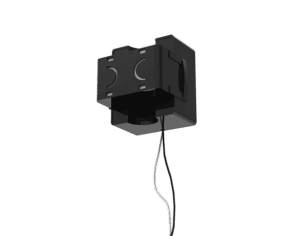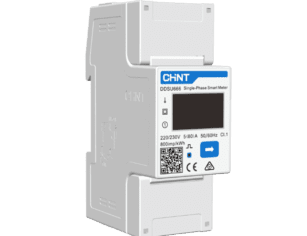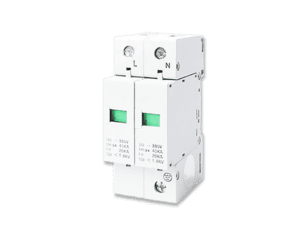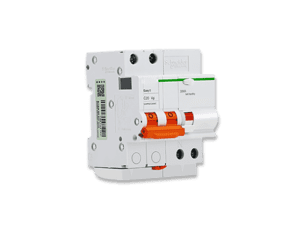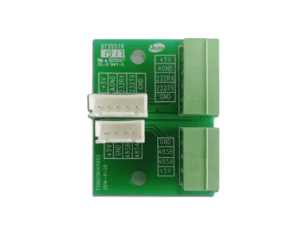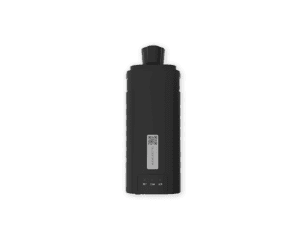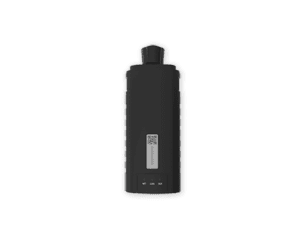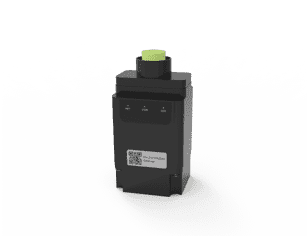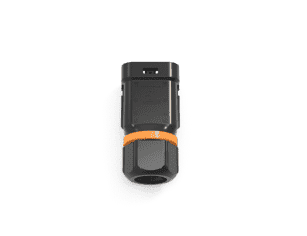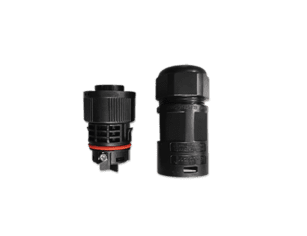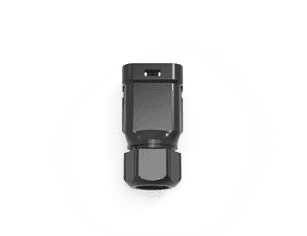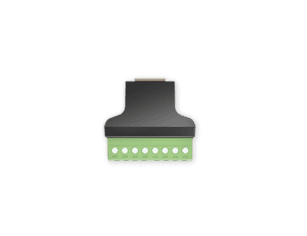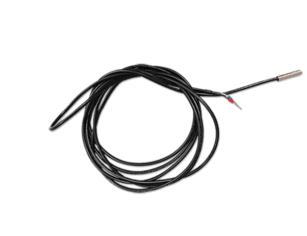Choisir le meilleur onduleur solaire hors réseau pour l'indépendance énergétique
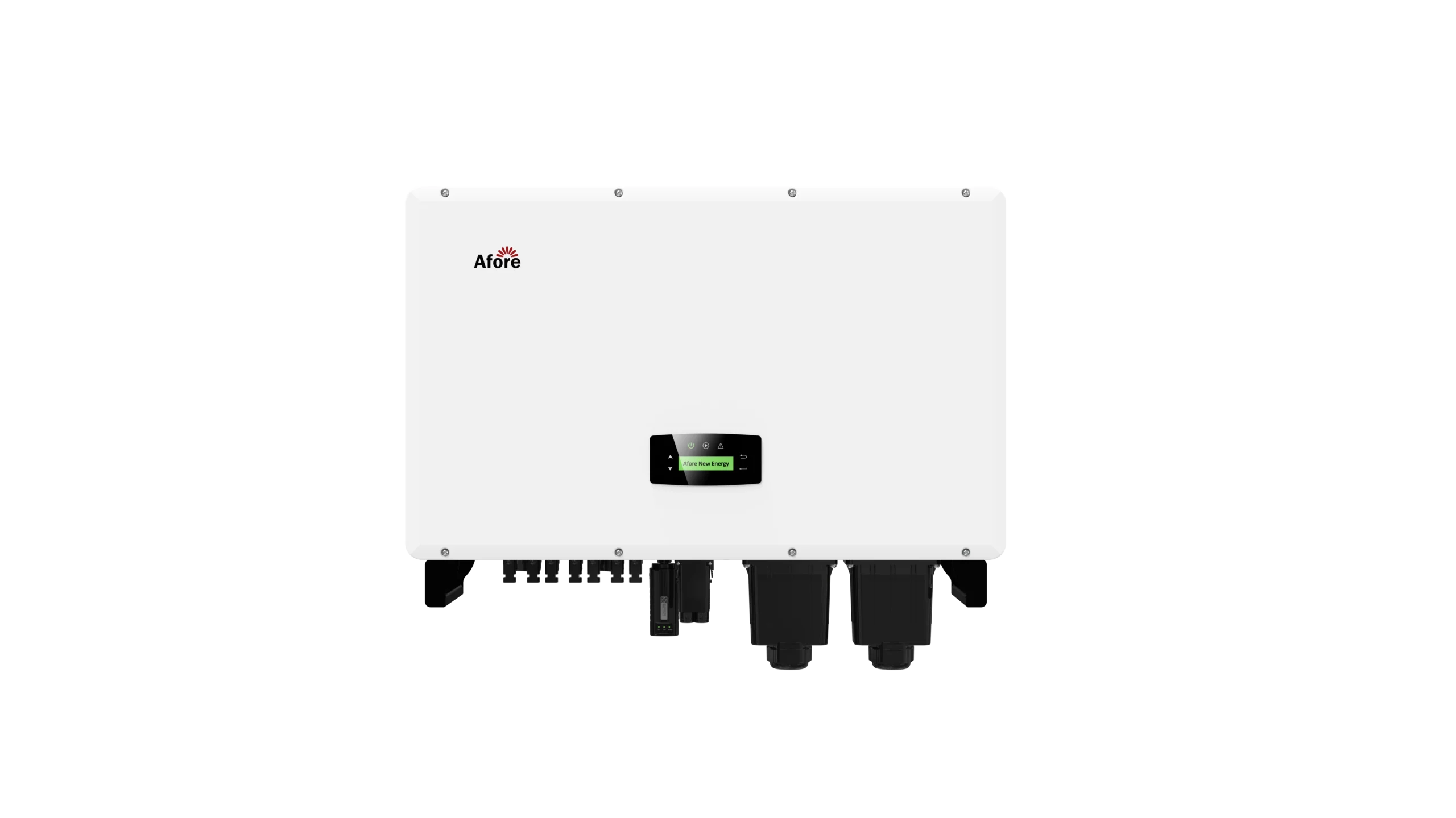
Table des matières
La fonction principale du système hors réseau onduleur solaire est de convertir le courant continu en courant alternatif utilisable par les appareils ménagers. Sans connexion au réseau électrique, vous aurez besoin du meilleur onduleur solaire hors réseau pour garantir une alimentation électrique stable de vos panneaux solaires à votre maison.
Les meilleurs onduleurs solaires hors réseau peuvent également recharger les voitures électriques et stocker de l'énergie pour une utilisation ultérieure. L'avantage d'avoir un onduleur solaire hors réseau est qu'il permet de recharger les voitures électriques et de stocker de l'énergie. onduleur solaire est que vous pouvez être totalement autonome et ne pas dépendre d'autres fournisseurs moins fiables.
C'est pourquoi ce blog a pour but de présenter les onduleurs solaires hors réseau et leurs différents types. Nous allons également vous recommander les 3 meilleurs onduleurs solaires hors réseau pour vous aider à en choisir un.
Introduction to Hors réseau Onduleurs solaires
Les onduleurs solaires hors réseau comprennent des batteries de stockage et des panneaux solaires afin que vous puissiez bénéficier des deux sources d'énergie à la maison.
Généralement, les onduleurs solaires hors réseau tirent leur énergie des panneaux solaires pour alimenter votre maison le matin et utiliser les batteries le soir.
Les onduleurs solaires hors réseau contrôlent le flux d'énergie, qui contrôle les sources d'alimentation en courant continu et en courant alternatif, qui sont ensuite utilisées pour remplacer l'électricité traditionnelle dans votre propre maison.
Ce type d'onduleur est idéal pour ceux qui souhaitent utiliser l'énergie solaire pour alimenter leur maison. Chacun d'entre nous possède différents types d'appareils, tels que les téléviseurs, les appareils de cuisine, les machines à laver et les lampes que nous utilisons dans la maison.
Rien que pour l'éclairer, il faut beaucoup d'énergie, surtout si vous voulez qu'il fonctionne 24 heures sur 24 et 7 jours sur 7. C'est pourquoi les onduleurs solaires hors réseau convertissent et stockent l'énergie que vous pouvez utiliser jour et nuit pour garantir le fonctionnement de tous vos appareils sans alourdir votre facture d'électricité.
Les systèmes d'alimentation hors réseau ou autonomes nécessitent souvent des onduleurs de batterie plus puissants et des chargeurs intégrés qui peuvent être configurés pour des systèmes solaires couplés en courant alternatif ou continu. Les onduleurs chargeurs solaires hors réseau modernes et flexibles, également connus sous le nom d'onduleurs multimodes, peuvent également être utilisés pour créer des systèmes hybrides avancés connectés au réseau.
Les petits systèmes hors réseau et les systèmes bricolés utilisent de simples régulateurs de charge solaire MPPT, également connus sous le nom de régulateurs solaires. Il ne s'agit pas d'onduleurs, mais de chargeurs de cellules solaires CC qui sont connectés entre le panneau solaire et la batterie pour réguler le processus de charge de la batterie et s'assurer que la batterie est correctement chargée ou, plus important encore, qu'elle n'est pas surchargée.
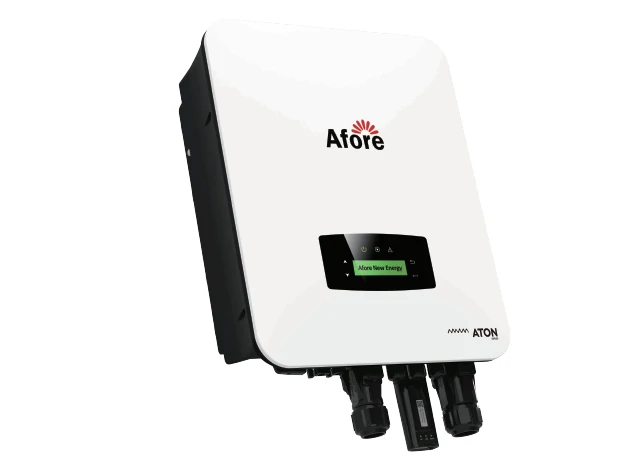
Différents types de convertisseurs solaires hors réseau
Il existe deux types d'onduleurs solaires hors réseau : l'onde sinusoïdale pure et l'onde sinusoïdale modifiée, qui diffèrent généralement sur trois aspects, à savoir : la qualité de la puissance de sortie, la compatibilité et le prix. En ce qui concerne la qualité de la puissance de sortie de ces onduleurs solaires hors réseau, la qualité de la puissance des ondes sinusoïdales pures est plus propre. Étant donné que ces deux mesures sont appelées qualité de la puissance de sortie CA, il est possible que la qualité de la puissance de sortie d'une onde sinusoïdale pure soit meilleure que la qualité de la puissance de sortie du réseau. On peut donc supposer que les ondes sinusoïdales pures fournissent une sortie de meilleure qualité que les ondes sinusoïdales modifiées.
Un type d'onduleur solaire hors réseau avec une qualité de sortie supérieure est considéré comme plus recommandé, même s'il est relativement plus cher. En outre, presque tous les appareils électriques peuvent utiliser ce type d'onduleur. Une autre raison pour laquelle la correction d'une onde sinusoïdale est moins chère qu'une autre est qu'elle peut causer certains dommages et problèmes avec certains appareils. Par exemple, les pompes et les moteurs des réfrigérateurs ont tendance à griller plus rapidement et les compresseurs fonctionnent à des températures plus élevées, ce qui peut endommager l'équipement.
Outre les appareils électroménagers, les ondes sinusoïdales corrigées peuvent également endommager les appareils électroniques sensibles. Ce type d'onduleur TV provoque généralement des lignes et un bourdonnement sur l'écran, ce qui entraîne une dégradation de la qualité vidéo et audio. Certains appareils ne fonctionnent pas complètement avec cet onduleur. Cependant, vous pouvez toujours choisir une onde sinusoïdale modifiée plutôt qu'une onde sinusoïdale pure parce qu'elle est moins chère si vous êtes sûr qu'elle fonctionnera avec l'appareil ou le dispositif. Outre ces types d'onduleurs, vous pouvez installer un centre d'alimentation précâblé qui comprend un onduleur, un chargeur, une télécommande et un disjoncteur, ainsi qu'un moniteur de batterie et un suppresseur.
Les avantages des onduleurs solaires hors réseau
L'avantage fondamental de l'onduleur solaire hors réseau est l'indépendance énergétique. Les autres avantages de cette technologie sont la capacité de fournir un approvisionnement régulier en électricité pendant les coupures de courant, même dans les zones les plus reculées, et de réduire les factures d'électricité tout en protégeant l'environnement en le rendant plus propre et plus vert.
En cas de catastrophe, les communautés connectées au réseau électrique principal sont privées d'électricité. Ces coupures de courant ou ces atrocités peuvent provoquer des dégâts électriques.
Une perte de revenus peut également en résulter si votre entreprise dépend principalement de la consommation d'électricité.
Disposer d'un onduleur est en effet un avantage, car le courant continu stocké par les batteries à décharge profonde des panneaux solaires peut fournir une alimentation électrique régulière à votre maison lorsqu'il est converti en courant alternatif.
Si vous possédez un onduleur solaire hors réseau, vous connaîtrez également la liberté financière, car la société de réseau a réduit les factures d'électricité mensuelles, ce qui signifie que vous pouvez économiser de l'argent à long terme.
Les compagnies de distribution étant incapables de fournir de l'électricité à certaines zones rurales, ce dispositif pourrait aider les ménages à accéder à la même qualité d'électricité que celle dont bénéficient les personnes vivant dans des zones fortement urbanisées. Cela est possible parce que le courant alternatif converti provient à l'origine de la lumière du soleil.
Un autre avantage du produit est qu'il fournit de l'énergie renouvelable et contribue à rendre la planète plus verte. L'énergie solaire étant disponible partout, le dispositif fonctionne quel que soit l'endroit où vous vous trouvez.
Les compagnies d'électricité sont connues pour être à l'origine de la pollution de l'air et d'autres problèmes environnementaux, et l'utilisation de cette technologie contribuera à sauver la planète.
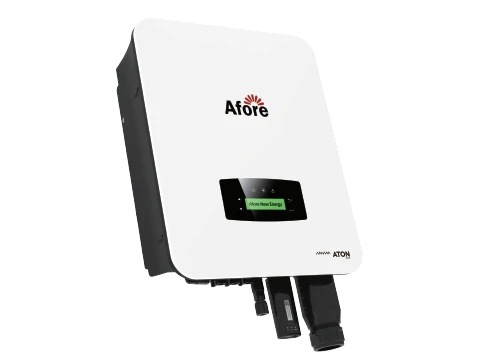
3 Best Off Grid Onduleurs solaires
Onduleur à stockage hybride monophasé 8-12 kW
- Max. 240A : Courant de charge/décharge max. Courant de charge/décharge 240A
- Surdimensionnement du PV : 1,5 fois le surdimensionnement du PV
- Canaux MPPT : Jusqu'à 3 canaux MPPT
- Fonction UPS : Temps de commutation < 10ms
- Parallèle : Max.6 Empilement parallèle
- Entrée : Générateur de support
| Données techniques | AF8K-SLP | AF9K-SLP | AF10K-SLP | AF11K-SLP | AF12K-SLP |
| Entrée PV | |||||
| Puissance d'entrée maximale (kW) | 12 | 13.5 | 15 | 16.5 | 18 |
| Tension PV maximale (V) | 550 | ||||
| Plage MPPT (V) | 80-500 | ||||
| Gamme MPPT complète (V) | 150-500 | 160-500 | 130-500 | 150-500 | 160-500 |
| Tension normale (V) | 360 | ||||
| Tension de démarrage (V) | 100 | ||||
| Courant d'entrée max. Courant d'entrée (A) | 18.5×3 | ||||
| Courant de court-circuit maximal (A) | 26×3 | ||||
| Nombre de trackers MPP/ Nombre de chaînes PV | 3/1+1+2 | ||||
| Port de la batterie | |||||
| Puissance de charge/décharge maximale (kW) | 8 | 9 | 10 | 11 | 12 |
| Courant de charge/décharge max. Courant de charge/décharge (A) | 200 | 240 | 240 | 240 | 240 |
| Tension normale de la batterie (V) | 51.2 | ||||
| Plage de tension de la batterie (V) | 40-60 | ||||
| Type de batterie | Li-ion / Plomb-acide, etc. | ||||
| Réseau CA et groupe électrogène diesel (en option) | |||||
| Courant continu maximal (A) | 37 | 41 | 46 | 50 | 55 |
| Puissance continue maximale (kVA) | 8 | 9 | 10 | 11 | 12 |
| Courant nominal du réseau (A) | 37/35 | 41/39 | 46/44 | 50/48 | 55/52 |
| Tension nominale du réseau (V) | 198 à 242 @ 220 / 207 à 253 @ 230 | ||||
| Fréquence nominale de la grille (Hz) | 50/60 | ||||
| Facteur de puissance | 0,999 (réglable de 0,8 surexcité à 0,8 sous-excité) | ||||
| Courant THD (%) | <3 | ||||
| Sortie de charge AC | |||||
| Courant continu maximal (A) | 37 | 41 | 46 | 50 | 55 |
| Puissance continue maximale (kVA) | 8 | 9 | 10 | 11 | 12 |
| Courant de pointe maximal (A) (10min) | 55.5/52.5 | 61.5/58.5 | 69/66 | 75/72 | 82.5/78 |
| Puissance de crête maximale (KVA) (10min) | 12 | 13.5 | 15 | 16.5 | 18 |
| Tension nominale AC L-N (V) | 220/230 | ||||
| Fréquence nominale AC (Hz) | 50/60 | ||||
| Temps de commutation (ms) | Sans couture | ||||
| Tension THD(%) | <3 | ||||
| Efficacité | |||||
| Efficacité européenne (%) | 98.1 | ||||
| Efficacité max. Efficacité (%) | 96.8 | ||||
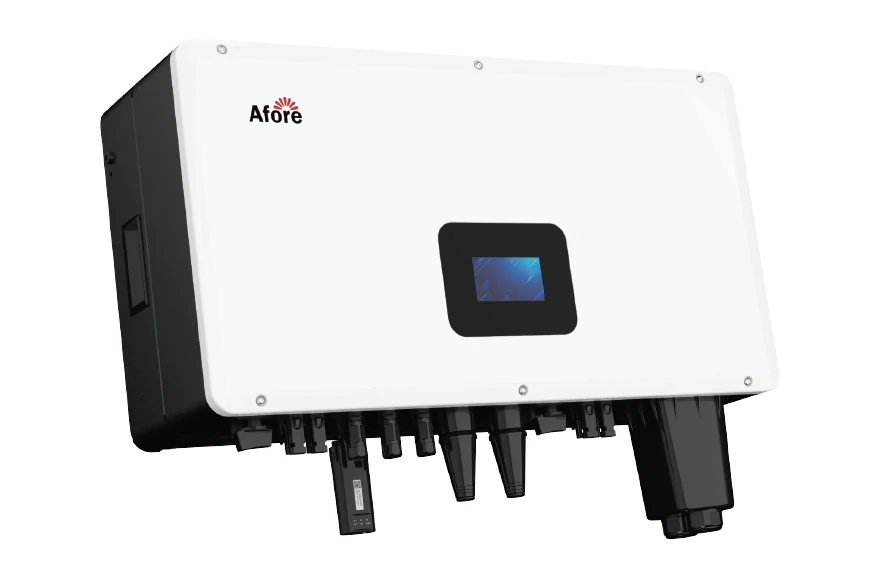
Stockage hybride triphasé Onduleur 3-30 kW
- Batterie au chlorure métallique de sodium : Soutenir la batterie au chlorure métallique de sodium
- Gamme étendue : Plage de tension (150-800V)
- 100% Déséquilibre : Supporte une charge déséquilibrée
- Surdimensionnement du PV : 1,5 fois le surdimensionnement du PV
- Max.40Adc : Courant de chaîne jusqu'à 40A
- Fonction UPS : Temps de commutation< 10ms
- Entrée : Générateur de support
| Données techniques | AF3K-TH | AF4K-TH | AF5K-TH | AF6K-TH | AF8K-TH | AF10K-TH |
| Entrée PV | ||||||
| Puissance d'entrée CC maximale (kW) | 5 | 6 | 7.5 | 9 | 12 | 15 |
| Tension PV maximale (V) | 1000 | |||||
| Tension d'entrée DC nominale (V) | 620 | |||||
| Plage de tension d'entrée DCI (V) | 150-1000 | |||||
| Plage de tension MPPT (V) | 150-850 | |||||
| Gamme MPPT complète (V) | 200-850 | 250-850 | 300-850 | 500-850 | ||
| Tension de démarrage (V) | 160 | |||||
| Courant d'entrée CC maximal (A) | 20×2 | |||||
| Max. Court-circuit(A) | 30×2 | |||||
| Nombre de trackers/cordes MPPT | 2/2 | |||||
| Port de la batterie | ||||||
| Tension nominale de la batterie (V) | 200 | 250 | 300 | 400 | ||
| Plage de tension de la batterie (V) | 150-800 | |||||
| Courant de charge/décharge max. Courant de charge/décharge (A) | 30 | 30 | 30 | 30 | 30 | 30 |
| Puissance de charge/décharge max. Puissance de charge/décharge (kW) | 3 | 4 | 5 | 6 | 8 | 10 |
| Courbe de charge | 3 étapes | |||||
| Type de batterie compatible | Batterie Li-ion / plomb-acide / chlorure métallique de sodium | |||||
| Grille AC | ||||||
| Puissance de sortie nominale en courant alternatif (kW) | 3 | 4 | 5 | 6 | 8 | 10 |
| Puissance d'entrée/sortie CA maximale (kVA) | 4.5/3.3 | 6/4.4 | 7.5/5.5 | 9/6.6 | 12/8.8 | 15/11 |
| Courant de sortie CA maximal (A) | 5.3 | 7 | 8.5 | 10.5 | 13.5 | 17 |
| Tension nominale AC (V) | 230/400 | |||||
| Fréquence CA nominale (Hz) | 50/60 | |||||
| Facteur de puissance | 1(-0,8-0,8) réglable | |||||
| Courant THD (%) | <3% | |||||
| Sortie de charge CA (secours) | ||||||
| Puissance de sortie nominale (VA) | 3000 | 4000 | 5000 | 6000 | 8000 | 10000 |
| Tension de sortie nominale (V) | 230/400 | |||||
| Fréquence de sortie nominale (Hz) | 50/60 | |||||
| Courant de sortie nominal (A) | 4.4 | 5.8 | 7.3 | 8.7 | 11.6 | 14.5 |
| Puissance de sortie de crête | 3300VA,60s | 4400VA,60s | 5500VA, 60s | 6600VA, 60s | 8800VA, 60s | 11000VA, 60s |
| THDV (avec charge linéaire) | <3% | |||||
| Temps de commutation (ms) | <10 | |||||
| Efficacité | ||||||
| Efficacité en Europe | 97.50% | |||||
| Max. Efficacité | 98.00% | 98.20% | ||||
| Efficacité de la charge/décharge de la batterie | 98.00% | |||||
| Données techniques | AF12K-TH | AF15K-TH | AF17K-TH | AF20K-TH | AF25K-TH | AF30K-TH |
| Entrée PV | ||||||
| Puissance d'entrée CC maximale (kW) | 18 | 22.5 | 25.5 | 30 | 37.5 | 45 |
| Tension PV maximale (V) | 1000 | |||||
| Tension d'entrée DC nominale (V) | 620 | |||||
| Plage de tension d'entrée DC (V) | 150-1000 | |||||
| Plage de tension MPPT (V) | 150-850 | |||||
| Gamme MPPT complète (V) | 500-850 | |||||
| Tension de démarrage (V) | 160 | |||||
| Courant d'entrée CC maximal (A) | 20×2 | 20+32 | 32×2 | 32×2 | 40×2 | 40×2 |
| Courant MaxShort (A) | 30×2 | 30+48 | 48×2 | 48×2 | 60×2 | 60×2 |
| Nombre de MPPT Tracker / Strings | 2/2 | 2/3 | 2/4 | 2/4 | 2/4 | 2/4 |
| Port de la batterie | ||||||
| Tension nominale de la batterie (V) | 450 | 500 | 400 | 500 | 500 | 550 |
| Plage de tension de la batterie (V) | 150-800 | |||||
| Courant de charge/décharge maximal (A) | 30 | 50 | 50 | 50 | 60 | 60 |
| Puissance de charge/décharge maximale (kW) | 12 | 15 | 17 | 20 | 25 | 30 |
| Courbe de charge | 3 étapes | |||||
| Type de batterie compatible | Batterie Li-ion/ Plomb-acide/ Chlorure métallique de sodium | |||||
| Grille AC | ||||||
| Puissance de sortie nominale en courant alternatif (kW) | 12 | 15 | 17 | 20 | 25 | 30 |
| Puissance d'entrée/sortie CA maximale (kVA) | 18/13.2 | 22.5/16.5 | 25.5/18.7 | 30/22 | 37.5/27.5 | 45/33 |
| Courant de sortie CA maximal (A) | 21.5 | 27 | 30 | 32 | 40 | 48 |
| Tension nominale AC (V) | 230/400 | |||||
| Fréquence CA nominale (Hz) | 50/60 | |||||
| Facteur de puissance | 1 (-0,8-0,8) réglable | |||||
| Courant THD (%) | <3% | |||||
| Sortie de charge CA (secours) | ||||||
| Puissance de sortie nominale (VA) | 12000 | 15000 | 17000 | 20000 | 25000 | 30000 |
| Tension de sortie nominale (V) | 230/400 | |||||
| Fréquence de sortie nominale (Hz) | 50/60 | |||||
| Courant de sortie nominal (A) | 17.4 | 21.8 | 24.7 | 29 | 36.3 | 43.5 |
| Puissance de sortie de crête | 13200VA,60s | 16500VA,60s | 18700VA, 60s | 22000VA,60s | 27500VA,60s | 33000VA,60s |
| THDV (avec charge linéaire) | <3% | |||||
| Temps de commutation (ms) | <10 | |||||
| Efficacité | ||||||
| Efficacité en Europe | 97.50% | 97.80% | 98.00% | 98.10% | ||
| Efficacité maximale | 98.30% | 98.50% | ||||
| Efficacité de la charge/décharge de la batterie | 98.00% | |||||
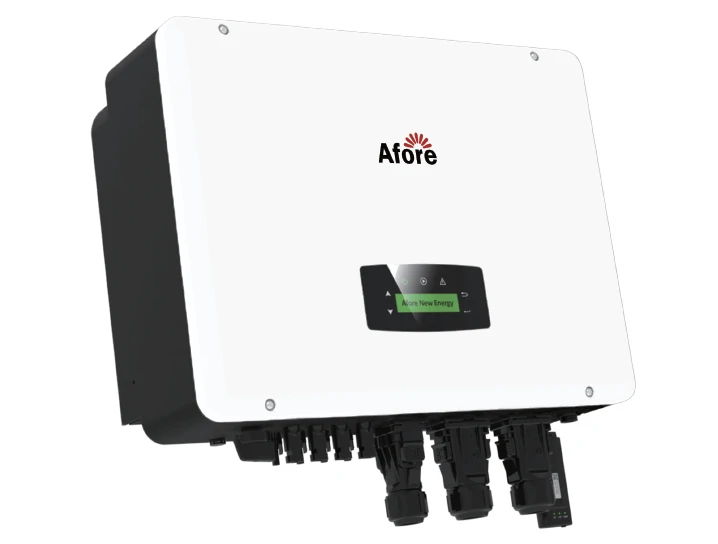
Onduleur string PV triphasé 40-60 kW Série basse tension
- SMART : surveillance intelligente de la chaîne, analyse intelligente de la courbe l-V
- PROTECTION : Protection de l'éclairage Dc &AC de type II
- MAX.38Adc : Courant de chaîne jusqu'à 38A
- PV OVERSIZE : >1.5 Temps d'entrée de la surdimension de la PV
- FACTEUR DE PUISSANCE : Compensation de la puissance active et réactive
- ANTI-FLOW : Fonction anti-intrusion
| Données techniques | BNT040KTA | BNT050KTA | BNT060KTA |
| Données d'entrée PV | |||
| Puissance max. Puissance DC (W) | 60000 | 75000 | 90000 |
| Tension CC maximale (V) | 750 | ||
| Plage de tension MPPT (V) | 200-750 | ||
| Plage de tension de pleine puissance MPPT (V) | 300-750 | ||
| Tension d'entrée nominale (V) | 400 | ||
| Tension de démarrage (V) | 200 | ||
| Courant d'entrée max. | 38×6 | ||
| Courant de court-circuit max. Courant court (A) | 48×6 | ||
| Nombre de trackers MPP / Nombre de chaînes PV | 6/12 | ||
| Type de connecteur d'entrée | MC4 | ||
| Données de sortie AC | |||
| Puissance de sortie max. Puissance de sortie (VA) | 44000 | 55000 | 66000 |
| Puissance de sortie nominale (W) | 40000 | 50000 | 60000 |
| Courant de sortie max. Courant de sortie (A) | 120 | 143 | 158 |
| Tension de sortie nominale( V) | 3P+N+PE/3P+PE 133/230 | ||
| Plage de tension du réseau | 180Vac-260Vac (selon la norme locale) | ||
| Fréquence de sortie nominale (Hz) | 50/60 | ||
| Gamme de fréquences de la grille | 45-55Hz/54-66Hz (selon la norme locale) | ||
| Facteur de puissance de sortie | 1 par défaut (réglable de 0,8 en avance à 0,8 en retard) | ||
| Courant de sortie THD | <3% | ||
| Efficacité | |||
| Max. Efficacité | 99.00% | ||
| Efficacité de l'euro | 93.00% | 98.40% | |
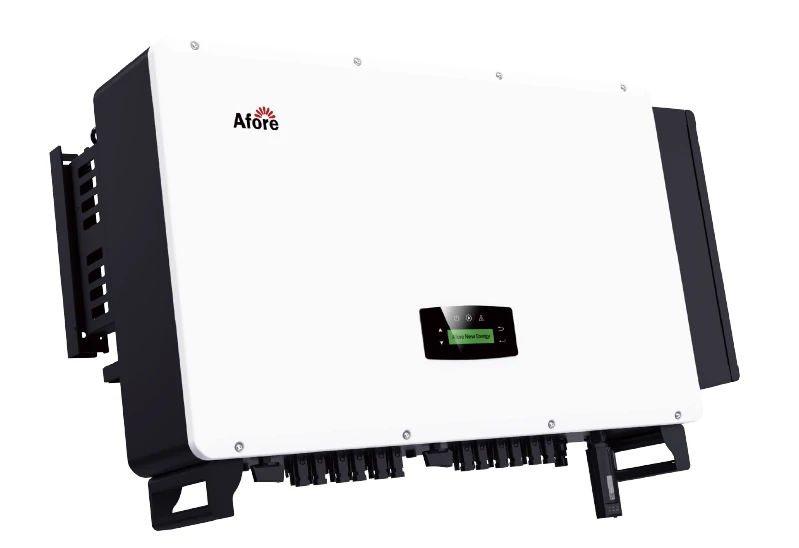
Quels sont les meilleurs produits hors réseau ? Les onduleurs solaires ont-ils un point commun ?
Les meilleurs onduleurs hors réseau sont des solutions tout-en-un. Ils combinent trois éléments essentiels dans une configuration précâblée :
- Un régulateur de charge solaire MPPT
- Un onduleur à onde sinusoïdale pure
- Un chargeur de courant alternatif à courant continu (chargeur de secours du générateur/de l'utilitaire)
En outre, ils prennent tous en charge les dernières batteries au lithium et disposent d'une application dédiée pour la surveillance dans le nuage et la configuration en ligne.
Comment choisir la meilleure offre Onduleur solaire de réseau ?
Tension de sortie de l'onduleur
Elle est basée sur les besoins de votre charge et correspond généralement à la tension/fréquence d'alimentation standard dans votre pays/région. La tension de sortie de l'onduleur solaire hors réseau doit correspondre à la tension nominale de la charge. 240 V en Europe et en Afrique et 120 V aux États-Unis. Les onduleurs doivent être alimentés à 50 Hz en Afrique et en Europe et à 60 Hz aux États-Unis.
Gamme de puissance de l'onduleur
Pour les équipements solaires, la gamme de puissance est importante. Vous devez vous assurer que l'équipement que vous choisissez peut répondre à vos besoins en énergie. Même si vous avez suffisamment de panneaux pour produire la quantité d'énergie nécessaire, cela n'a pas beaucoup de sens si votre onduleur ne peut pas gérer la charge. C'est pourquoi la plage de puissance de l'onduleur est également importante. Vous trouverez ci-dessous les différentes gammes de puissance des onduleurs et leurs applications typiques :
- 1 à 2 kW : petite cabine avec lumière, télévision, réfrigérateur et téléphone.
- 2 à 4 kW : grandes cabanes et quelques petites maisons économes en énergie.
- 4 à 8 kW : la plupart des maisons hors réseau.
- 8 à 16 kW : grandes maisons hors réseau, fermes ou ranchs, et petites entreprises.
Bien que les tailles des onduleurs soient plus grandes et plus petites que celles énumérées ci-dessus, il s'agit des options les plus populaires, avec une préférence pour les 4 kW et les 8 kW.
Entrée de la tension continue de l'onduleur
Une fois que nous avons sélectionné la puissance et la marque/fabricant de l'onduleur solaire, la fiche technique de l'onduleur indique une plage de tension d'entrée CC correspondante, et nous devons choisir la tension de la batterie qui correspond à cette plage.
L'onduleur avec régulateur de charge solaire intégré sera de type MPPT ou PWM.
Le MPPT est techniquement meilleur car il est capable de convertir la haute tension du panneau solaire en une tension plus basse, de sorte qu'il charge la batterie avec une faible perte (haut rendement), mais il coûte plus cher que le type PWM. D'un autre côté, si nous pouvons sélectionner correctement le type de régulateur de charge solaire PWM en fonction des spécifications du panneau solaire, nous pouvons confirmer qu'il peut fonctionner aussi bien que le type de régulateur de charge MPPT.
Considérer les ondes sinusoïdales pures au lieu des ondes sinusoïdales modifiées
Certains fabricants parlent d'onduleurs à onde sinusoïdale pure. Il n'est pas nécessaire de savoir exactement comment ils fonctionnent. Il suffit de savoir que la puissance de sortie d'un onduleur à onde sinusoïdale pure est plus "propre" que celle d'un onduleur à onde sinusoïdale modifiée.
Un onduleur à onde sinusoïdale pure fournit une énergie de meilleure qualité, similaire (ou supérieure) à celle de notre réseau. Les onduleurs sinusoïdaux modifiés sont moins chers, mais produisent une énergie de moindre qualité.
C'est pourquoi les onduleurs à onde sinusoïdale améliorée peuvent poser des problèmes à certains équipements. Les moteurs, les pompes et les compresseurs chauffent et s'usent plus rapidement. Dans certains équipements sensibles (par exemple, les ordinateurs), ils peuvent être endommagés ou ne pas fonctionner du tout. En outre, ces onduleurs produisent souvent un bruit de fond dans la stéréo et dégradent la qualité vidéo et audio de certains téléviseurs.
C'est pourquoi nous ne recommandons pas l'utilisation d'onduleurs à onde sinusoïdale modifiée dans la plupart des applications ; la plupart de nos clients hors réseau utilisent des onduleurs à onde sinusoïdale pure pour éviter ces problèmes potentiels.
Besoin d'un moyen rapide de faire la différence ? Consultez le taux de distorsion harmonique totale (THD) de l'onduleur. La DHT est un indicateur de la qualité de l'énergie produite qui figure sur la fiche technique de tout bon onduleur. Règle générale Pour éviter les problèmes, choisissez un onduleur à onde sinusoïdale pure avec un THD de 5% ou moins.
Voir les spécifications techniques
- Efficacité : Il s'agit d'une mesure de la quantité d'énergie que votre batterie d'onduleur solaire fournit à votre maison lorsqu'elle fonctionne dans des conditions parfaites. Un bon rendement maximal est de l'ordre de 94 à 96 %.
- Plage de température : Les onduleurs solaires sont extrêmement chauds. Si vous prévoyez d'installer un système solaire dans un garage ou dans un endroit susceptible d'être exposé à des températures extrêmes, prêtez une attention particulière à la plage de température.
- Garantie : Les onduleurs solaires sont garantis 1 an, généralement 3 à 5 ans, et certains fabricants proposent une option d'extension de garantie de 10 ans. Afore offre une garantie d'usine standard qui est valable 5 ans à partir de la date d'installation et pas plus de 5 ans et demi à partir de la date de livraison par Afore.

Conclusion
Un onduleur solaire hors réseau est un composant absolument essentiel pour ceux qui recherchent l'indépendance énergétique. C'est particulièrement vrai pour les régions isolées ou pour ceux qui cherchent à réduire leur dépendance à l'égard des fournisseurs d'électricité traditionnels. Les meilleurs onduleurs solaires hors réseau présentent de nombreux avantages. Ils permettent notamment de convertir et de stocker l'énergie solaire, de fournir une alimentation de secours en cas de panne de courant et de réduire les factures d'électricité au fil du temps. Il existe différents types d'onduleurs, tels que les onduleurs à onde sinusoïdale pure et les onduleurs à onde sinusoïdale modifiée, les modèles à onde sinusoïdale pure étant les plus recommandés en raison de la qualité élevée de leur production et de leur compatibilité avec un plus grand nombre d'appareils. Les meilleurs onduleurs solaires hors réseau intègrent généralement un régulateur de charge MPPT, un onduleur à onde sinusoïdale pure et un système de charge de secours pour garantir l'efficacité et la fiabilité. En tenant compte de la puissance, de la plage de tension et de la qualité de sortie de l'onduleur, vous pouvez choisir la meilleure solution pour répondre à vos besoins et contribuer à un avenir énergétique plus vert et plus durable.





